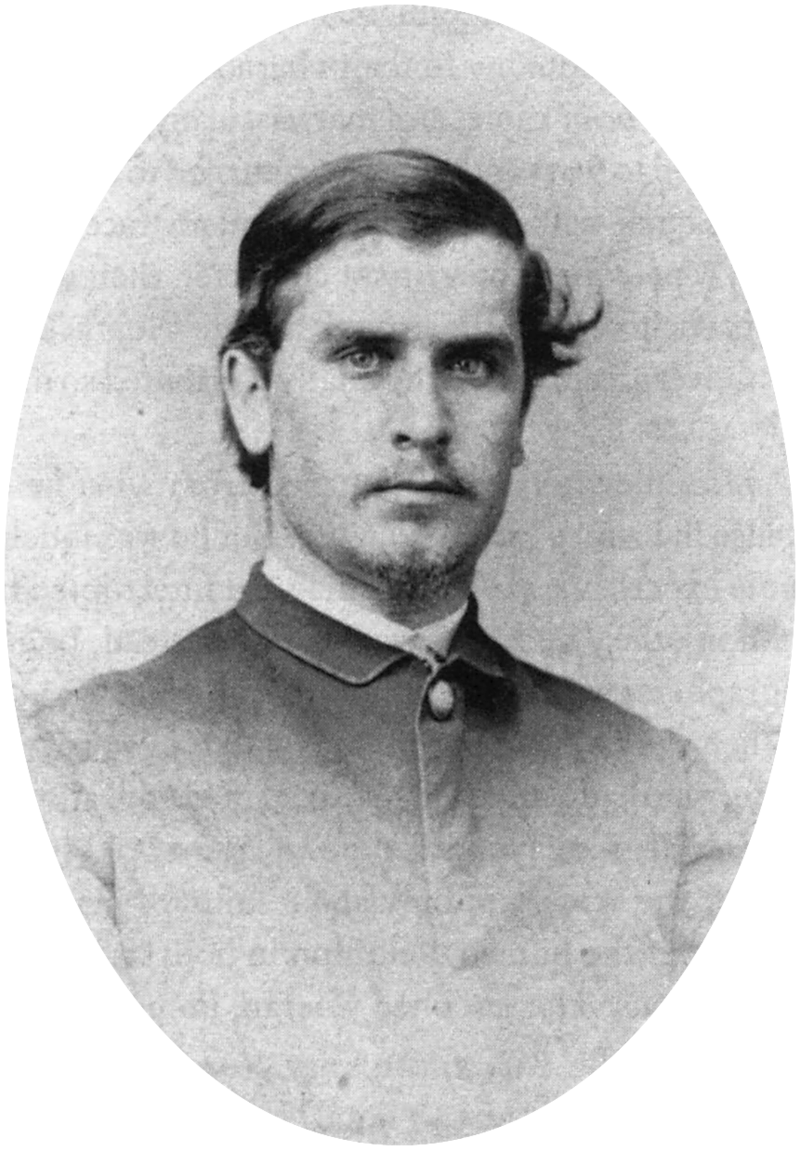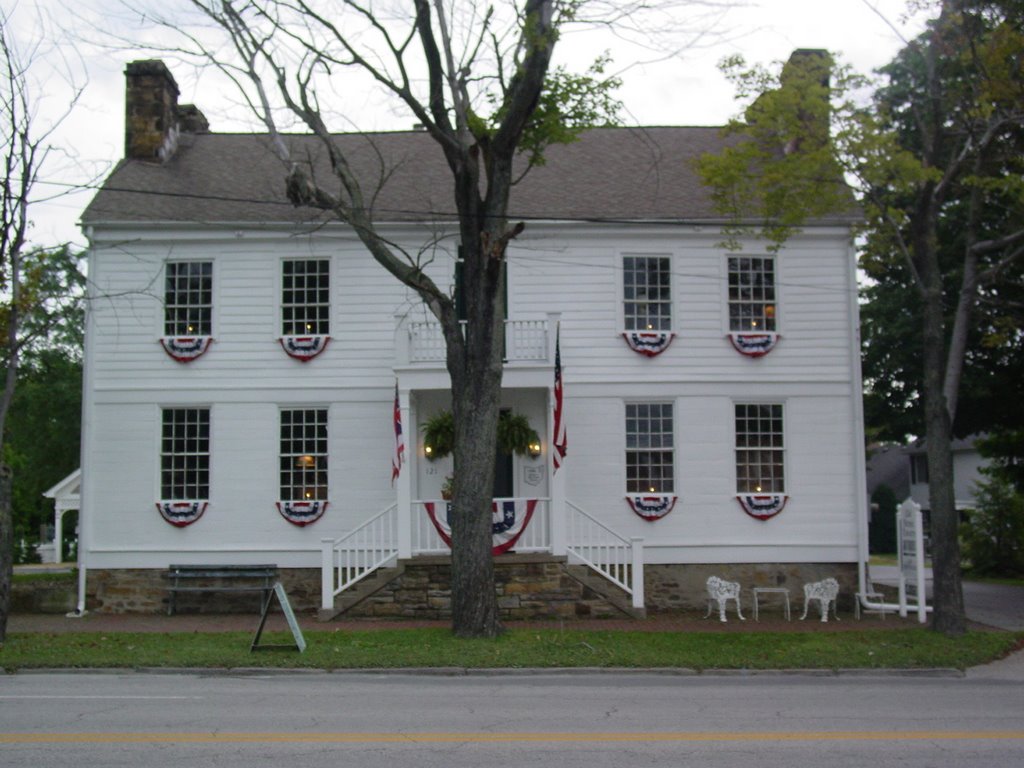ECW Weekender: William McKinley
As President’s Day weekend is upon us, it would be altogether fitting and proper to have an ECW Weekender post related to the holiday.
Ohio and Virginia are known for their presidential legacies, providing more men for the post than any other states. With that in mind, it is no wonder then that a drive through the numerous small and large towns of Ohio would have connections to our nation’s presidential past. One such small town in northeast Ohio, near the border with Pennsylvania, which holds a wealth of presidential history, is Poland.
Located approximately seven miles southeast of Youngstown, Poland, Ohio has a long history. In 1796 it became the first charted township in the Connecticut Western Reserve. Within six years, the village of Poland was founded. As the village and township became a part of the newly-formed state of Ohio in 1803, as well as Mahoning County, infrastructure within the community, as well as locally, grew rapidly.
Residents of Poland then, as well as today, firmly believed in a great education for their children. By 1830, Poland Academy was opened by a local Presbyterian minister. Although it went through several name changes, as well as locations and headmasters, Poland Academy, later Poland Seminary, a private institution, remains a staple in the community today as Poland Seminary High School.
One student that matriculated through this institution was future president William McKinley. Originally from Niles, Ohio, in Trumbull County to the north, McKinley’s family moved to Poland in 1852 to provide their children with a better education than could be found in Niles. Young William graduated from the town’s educational institution in 1859, and moved on to higher education at both Mount Union College in Alliance, Ohio, and Allegheny College in Meadville, Pennsylvania. Unfortunately, due to poor health and possibly depression, William returned home and did not graduate from either university.
As war descended and the country fractured, McKinley, along with thousands of other boys his age, enlisted into military service. War rallies, patriotic speeches, and even drilling on the green in Poland had begun just days after the surrender of Fort Sumter and President Lincoln’s call for volunteers. McKinley, however, was hesitant at first. As men from Poland and nearby Loweville organized and drilled, young Will “decided to wait and study the situation a little more carefully at first. I wanted to see how the boys lived in camp, and wished to understand myself so thoroughly that I would not regret any action that I decide to take.”

The newly-formed companies left for Columbus, via Youngstown, to be mustered into Federal service. It was during this time, early June 1861, that McKinley, as well as his cousin William McKinley Osborne, decided to enlist. According to local history, it was at the Sparrow House, a local tavern, that McKinley enlisted in the army. In one history of the village, it notes that “It was on the porch of this tavern that William McKinley enlisted in the Union Army in 1861.”
Other accounts say that it wasn’t at the Sparrow House, where this meaningful step in McKinley’s life took place. Osborne later in life recorded the moment:
“There was great excitement at that time, and hundreds of people followed the soldiers. Will and I were among them. We drove in a buggy over to Youngstown, and there saw the company leave for Columbus. On our way back to Poland that night we discussed the matter together and decided that it was our duty to volunteer, and we thought that the men who staid would be despised by the community.
“When we reached home Will told his mother what we had concluded to do, and she at once replied: ‘Well, boys, if you think it is your duty to fight for your country, I think you ought to go.’ A few days after this I left Poland for home, and told father that I wanted to go to the army. I knew he would allow me to go, as Aunt Nancy advised. I was not disappointed. My father was a Democrat, but he was a liberal man. He told me I could do as I wished, and he gave me some money (it was gold, I remember) to fit me out. Will McKinley left Poland, and we went to Cleveland together. From there we went to Columbus and enlisted at Camp Chase. General Fremont swore us in. Our enlistment was in cold blood, and not through the enthusiasm of the moment. It was done as McKinley has done the most things of his life, as the logical offspring of careful conclusion.”
Whether or not McKinley signed up on the front steps or porch of the Sparrow House or not, it was surely a place that the future president visited and knew well. It was also the site of the villagers of Poland sending off the recruits from Poland and Loweville in June 1861.
“The balconies of the old Sparrow House (it had a double veranda then) were crowded with women, some singing, others crying. A tense and nervous strain was felt by every one. The leading lawyer of the vicinity, Charles E. Glidden, was making a speech from the front of the tavern. As the result of his eloquence, man after man stepped up to volunteer, and as they did so, the crowd cheered and women pinned red, white, and blue upon the new soldiers.”
Today you can visit the Sparrow House, or Old Stone Tavern as it has become known over the years. It has several modern offices in it, as well as an antique store and is open most business days for a stroll around. A part of the building burned several years ago, but a large portion of it remains in its original form, with the rest restored to its original appearance after the fire.

Just several doors down on the same side of the street is the Poland Branch of the Mahoning County Library system. Inside the lower level of the library are numerous walking canes that McKinley used during his lifetime and presidency. This is a great place to hit the restroom and get a cup of coffee before heading across the street. Crossing the road at the library, you will walk upon the green where the men that joined up in 1861 and subsequent months and years practiced drill before heading off to larger metropolitan areas for mustering in. Lastly, just a few doors down, and across the street from the Old Stone Tavern, you will find an Ohio Historical marker. The marker, in a parking lot near a bank, marks the spot of the McKinley home in Poland after they moved from Niles.
If you have more time in the area, a short drive northward from Poland is Niles, Ohio, birthplace of William McKinley. There you can visit the McKinley birthplace home, as well as the McKinley Memorial, museum, and library.
You can find addresses and locations below to visit these sites:
Old Stone Tavern Antiques, LLC
Address: 121 S Main St, Poland, OH 44514
Phone: (330) 770-3413
Poland Library
Address: 311 S Main St, Poland, OH 44514
Phone: (330) 744-8636
The McKinley Birthplace Museum
Museum Hours of Operation:
Monday-Wednesday 9:00am-5:00pm
Last self guided tour at 4:30pm
Thursday: 9AM – 3PM
Last self-guided tour at 2:30PM
Friday, Saturday, and Sunday-Closed
McKinley Memorial Library
40 N. Main St.
Niles, OH 44446
Phone: 330-652-1704
Fax: 330-652-5788
E-mail: mckinley@mcklib.org
Website: http://www.mckinley.lib.oh.us
McKinley Birthplace Home and Research Center
40 S. Main St.
Niles, OH 44446
Phone: 330-652-1704 ext. 203
E-mail: mckinley@mcklib.org
Website: http://www.mckinley.lib.oh.us/index.php/index3
Sources:
William H. Armstrong, Major McKinley: William McKinley & the Civil War (Kent: The Kent State University Press, 2000), 1-9.
Joseph Green Butler, Jr., History of Youngstown and the Mahoning Valley Ohio (Chicago, American Historical Society, 1921), 549.
Ohio Archaeological and Historical Quarterly, Vol. 10, (Columbus: A.H. Smythe, 1887), 232-233.
Charles S. Olcott, American Statesman, Second Series, William McKinley, 2 Volumes, Vol. 1, (Boston: Houghton Mifflin Company), 23-25.

1 Response to ECW Weekender: William McKinley